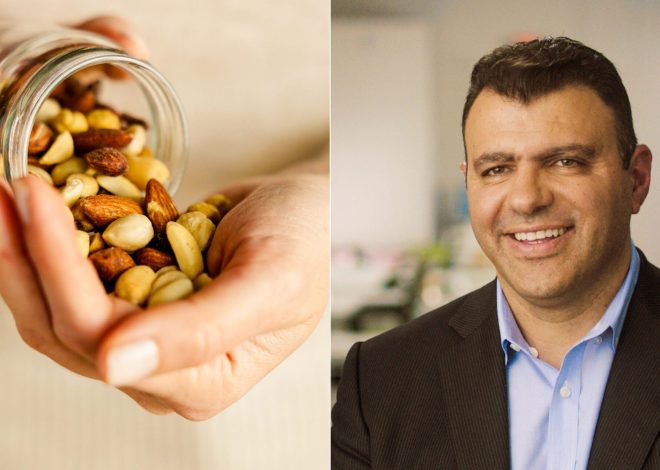
How does healthy eating work? | pharmacy magazine

Fat makes you fat, that’s what food experts have been preaching for decades. In order to feel full, you should consume plenty of carbohydrates. Today the recommendations of the German Nutrition Society (DGE) look different and are more differentiated. Prof. Dr. Bernhard Watzl, DGE President and head of the DGE working group on food-related nutritional recommendations from the DGE: “Anyone who eats predominantly fruit and vegetables, whole grains, legumes, nuts and vegetable oils is not only protecting their health. A plant-based diet also protects the environment.”
Specifically, this means: A diet that consists of at least 75 percent plant-based foods and also includes reducing food waste is recommended. Why is that? When producing animal foods such as meat, sausage and dairy products, Mother Earth’s resources are put under greater strain. In addition, high meat consumption is associated with a higher risk of developing certain diseases.
Tips for a balanced diet
The German Nutrition Society has formulated eleven rules about what a healthy diet can look like, which you can also find on their website.
Enjoy a variety of foods
Take advantage of the variety of foods and eat a variety of foods. Choose mostly plant-based foods. No food alone contains all the nutrients. The more varied you eat, the lower the risk of an unbalanced diet.
Vegetables and fruits – take “5 a day”
Eat at least 3 servings of vegetables and 2 servings of fruit a day. One serving corresponds to a full hand, for both children and adults. Vegetables and fruits provide you with plenty of nutrients, fiber and secondary plant substances. The latter are fragrances, colors and flavors that have a wide variety of, mostly health-promoting, effects. For example, beta-carotene, which is contained in carrots, is well known. Among other things, it has an antioxidant effect and strengthens the immune system.
In addition, eating vegetables and fruit contributes to satiety and also reduces the risk of cardiovascular and other diseases. Attention: Fruit juices are not included because they contain a lot of sugar and are therefore unhealthy. You should also eat fruits that don’t contain as much fructose, such as berries, grapefruit or apricots. And pay attention to the harvest time when choosing fruits and vegetables.

Nuts and legumes regularly
Legumes such as lentils, chickpeas and beans should be on the menu at least once a week. They contain a lot of protein and are therefore very filling. In addition, legumes are rich in vitamins, minerals and fiber. A small handful of unsalted nuts daily also provides healthy fats and strengthens heart health. Incidentally, walnuts are considered particularly healthy because they have a high content of polyunsaturated fatty acids.
Choose whole grains
When it comes to grain products such as bread, pasta, rice and flour, the whole grain variety is the best choice for your health. Whole grain foods fill you up longer and contain more nutrients than white flour products. Fiber from whole grains can reduce the risk of type 2 diabetes mellitus, lipid metabolism disorders, colon cancer and cardiovascular diseases.
Only a few animal things
The DGE’s new nutritional recommendation is: The menu should consist of a maximum of a quarter of animal products. Of this, the meat and sausage portion should amount to a maximum of 300 grams per week. Although meat contains readily available iron as well as selenium and zinc, too much, especially sausage, can increase the risk of cardiovascular disease and colon cancer.
If you don’t want to go without sausage and meat, you should pay attention to the way in which it is kept. Organic meat contains more good fats than conventionally produced meat.
You should consume milk and dairy products such as yogurt or cheese every day as they contain protein and calcium and vitamin B2. Fish is also part of a balanced diet. Sea fish like cod provides you with iodine and fatty fish like salmon and mackerel provide you with important omega-3 fatty acids. Eat fish once or twice a week.
Use health-promoting fats
Prefer vegetable oils such as rapeseed oil and spreadable fats made from them. Walnut, linseed and olive oil are also recommended. Avoid hidden fats. Fat is often “invisible” in processed foods such as sausages, pastries, confectionery, fast food and ready-made products. Vegetable oils, like all fats, provide a lot of calories. But they also provide essential fatty acids and vitamin E.
Save sugar and salt
Sugar and salt are also “invisibly” contained in the vast majority of all processed supermarket products. Consuming these products promotes common diseases such as obesity and type 2 diabetes. Foods and drinks sweetened with sugar are therefore not recommended. Avoid these if possible and use sugar sparingly when baking or sweetening dishes. Save salt and reduce the amount of salt-rich foods. Season creatively with herbs and spices. Sugar-sweetened foods and drinks are usually low in nutrients and contain unnecessary calories. Sugar also increases the risk of tooth decay. Too much salt in food can increase blood pressure. In total, it shouldn’t be more than 6 g per day. If you use salt, then enriched with iodine and fluoride.
It’s best to drink water
Drink around 1.5 liters every day. However, people with severe, advanced heart or kidney failure should coordinate the amount they drink with their doctor.
Water or other calorie-free drinks such as unsweetened tea are best. Sugar-sweetened and alcoholic drinks are not recommended. Your body needs fluids in the form of water.
Sugar-sweetened drinks provide unnecessary calories and hardly any important nutrients. In addition, lemonades etc. increase blood sugar. This means: There is an increased release of insulin. The hormone insulin is the central and most important fattening hormone that converts sugar that is not immediately needed into fat. Consequently, the consumption of soft drinks promotes the development of obesity and type 2 diabetes mellitus.
Alcoholic drinks are also high in calories. Alcohol also promotes the development of cancer and is associated with other health risks.
Prepare gently
Cook food for as long as necessary and as short as possible, with little water and little fat. Gentle cooking methods include stewing, stewing or steaming. Avoid burning food when roasting, grilling, baking and deep-frying. Burnt areas contain harmful substances.
Gentle preparation preserves the natural taste and protects the nutrients. To do this, foods such as vegetables and fruit should only be rinsed and processed shortly before consumption. Only peel if absolutely necessary and then thinly. There are usually a lot of vitamins and minerals in the peel.
Eat mindfully and enjoy
Give yourself a break between meals and take your time eating. Eating slowly and mindfully promotes enjoyment and a feeling of satiety.
Watch your weight and keep moving
Wholesome nutrition and physical activity go together. Not only regular exercise is helpful, but also an active everyday life, for example by walking or cycling more often. 30 to 60 minutes of moderate physical activity per day will promote your health and help you regulate your weight.
The World Health Organization (WHO) recommends at least 150 minutes of physical activity weekly. In addition to endurance, which strengthens the cardiovascular system, an important point is strength training. According to WHO, you should train all major muscle groups 2 or more days a week.

Ethel Purdy – Medical Blogger & Pharmacist
Bridging the world of wellness and science, Ethel Purdy is a professional voice in healthcare with a passion for sharing knowledge. At 36, she stands at the confluence of medical expertise and the written word, holding a pharmacy degree acquired under the rigorous education systems of Germany and Estonia.
Her pursuit of medicine was fueled by a desire to understand the intricacies of human health and to contribute to the community’s understanding of it. Transitioning seamlessly into the realm of blogging, Ethel has found a platform to demystify complex medical concepts for the everyday reader.
Ethel’s commitment to the world of medicine extends beyond her professional life into a personal commitment to health and wellness. Her hobbies reflect this dedication, often involving research on the latest medical advances, participating in wellness communities, and exploring the vast and varied dimensions of health.
Join Ethel as she distills her pharmaceutical knowledge into accessible wisdom, fostering an environment where science meets lifestyle and everyone is invited to learn. Whether you’re looking for insights into the latest health trends or trustworthy medical advice, Ethel’s blog is your gateway to the nexus of healthcare and daily living.







